Are You a Chopstick Traditionalist Or a Chopstick Anarchist?
Some names have been changed at the victim’s request.
There are only 2 types of people in the world: those who know how to use chopsticks ‘correctly’ and those who don’t.
If this sounds like Sinocentrism or Chinese Privilege, let me make my accusation a little more egalitarian: Why do so many Singaporeans—including an overwhelming majority of Chinese Singaporeans—use their chopsticks ‘wrongly’?
Walk around any hawker centre. Observe your colleagues over lunch. Interrogate your close friends. You will see that I speak the truth. Chopstick-wise, Singapore is a nation divided against itself.
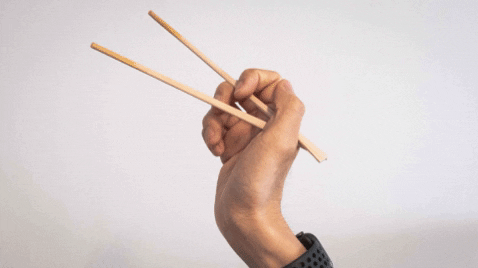
On one side, Orthodox Chopstick Users who deploy the ‘correct’ ‘standard’ technique: V-shape. No cross. Bottom chopstick immobile. Three fingers up, two fingers below, hand split neatly in a Spock-like salute.
On the opposite bank—Madness! Anarchy! Heterodox Chopstick Heretics with a 100 different, idiosyncratic ways of chopstick use! Some wedge the chopsticks between thumb and forefinger like a pair of kitchen tongs. Some cross them to make a pair of blunt scissors.
Some—like my friend ‘Z’ —employ the chopstick in so strange a fashion that I cannot find the words to describe his alien contortions. Let me just leave this image here for benefit of future scientists and aspiring gymnasts:
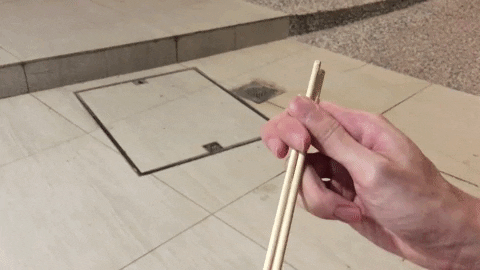
Jews and Gentiles. Catholics and Protestants. Chopsticks Orthodoxy and Chopstick Heretics. Search your feelings, you know it to be true. We all have that one friend whose chopstick technique is so awful that eating Kway Teow is like climbing Mt. Everest. They are the ones who harpoon their fishballs, rake their mee, and turn every white shirt into a Jackson Pollock.
50/50
The natural explanation for why some people use the Orthodox method whilst others deploy heterodox chopstick strategies is ‘Chinese-ness’.
After all, Chopsticks are not just invented in China, they are supposed to be uber-uber-Chinese. So Chinese that Confucius himself was allegedly involved in their promotion and proliferation—although I am unable to find a primary source for this oft-stated factoid.
This is false—at least in Singapore. After 3 days of harassing my friends and colleagues, I found no correlation between chopstick use and how ‘Cheena’ you are.
If correct chopstick use was a ‘Chinese’ thing, it should hold that Chinese-speaking households would use the Orthodox technique. Conversely, Ang Moh Pai Singaporeans who grew up with Enid Blyton and CHIJ pinafores are more likely to use chopsticks ‘incorrectly’, because they grew up in fork-and-spoon households eating chops-and-pasta.

This is true to a limited extent. ‘C’, a self-confessed banana who speaks the Queen’s like a CNA anchor, does not know the Orthodox method. Neither does my boss Mark, who played Rugby in ACS, studied in Australia and probably wears Union Jack Boxers to sleep.
In his own words: “Oh yeah, eh, shit. I use them wrongly … everyone in my family uses them wrongly.”
However, the heterodox chopstick technique is not merely inherited like a disability from westernised parents. Friend K comes from a large Hokkien-speaking family, enjoys Mandopop and has not one, but two parents who use the Orthodox technique.
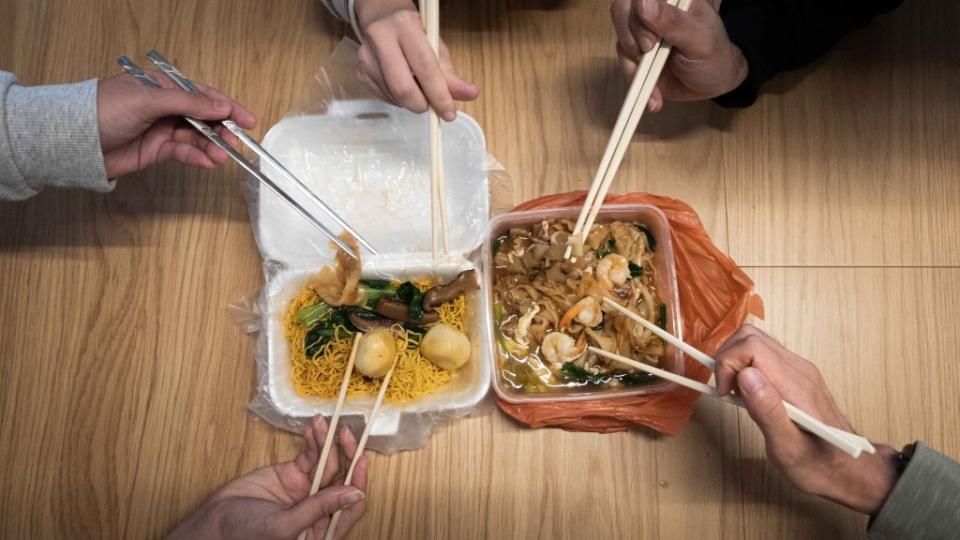
He is sad to report that he crosses his chopsticks. Over Whatsapp, he shame-facedly admits that his mother had tried to educate him in the Orthodox way when he was young, but alas, it was already too late. He had learnt to Giap his food using ‘the cross method’ and could not unlearn it.
A quick survey of the editorial team reveals an even 50/50 split between Orthodox and Heterodox Chopstick schools. My colleague ‘B’ is Chinese but so inept in chopsticks that he mainly employs them as a skewer. Justin is Eurasian but has taught himself the correct method by osmosis and imitation. Our intern Ajay does not use the Orthodox method, but then again, neither can Zach, our photographer for this article.
In his words, the Orthodox method is awkward, tiring, and uncomfortable. He complains that his way is ‘easier’ because you can’t ‘close the chopsticks precisely’ when using ‘the correct method’.
Indeed, neither race, class, gender nor age can explain The Great Chopstick Schism. Friend Z —of the aforementioned alien technique—has 4 members in his family and they employ 4 different ways of using the chopsticks between them.
His father employs the Orthodox method and eats from a bowl. Z does his strange finger acrobatics. His mom uses the cross method, but prior to the writing of this article, for 50 years, she had always believed that ‘crossing’ was the correct way.
Z’s younger sister uses the Orthodox method … with both hands. She had taught herself ambidextrous chopstick skills because *quote* “When people kept hitting her hand when taking food, she could switch to the other side” *unquote*.
The Short Grain Hypothesis
Since we cannot ascertain the demographics of The Great Chopstick Schism, let us consider the possible causes for its emergence.
The obvious explanation is multiculturalism. Singaporean food has long since evolved beyond its Chinese influences, making chopsticks maladaptive/redundant. Yong Tau Foo might require chopsticks, but only a fool eats curry png, Katong laksa, or chicken rice with chopsticks.
Having blended syncretically and evolved beyond its Southern Chinese roots, we no longer have any need for the chopstick as an eating implement. Hence ‘correct’ usage has faded into obscurity and irrelevance, like the Sheep-intestine condom.
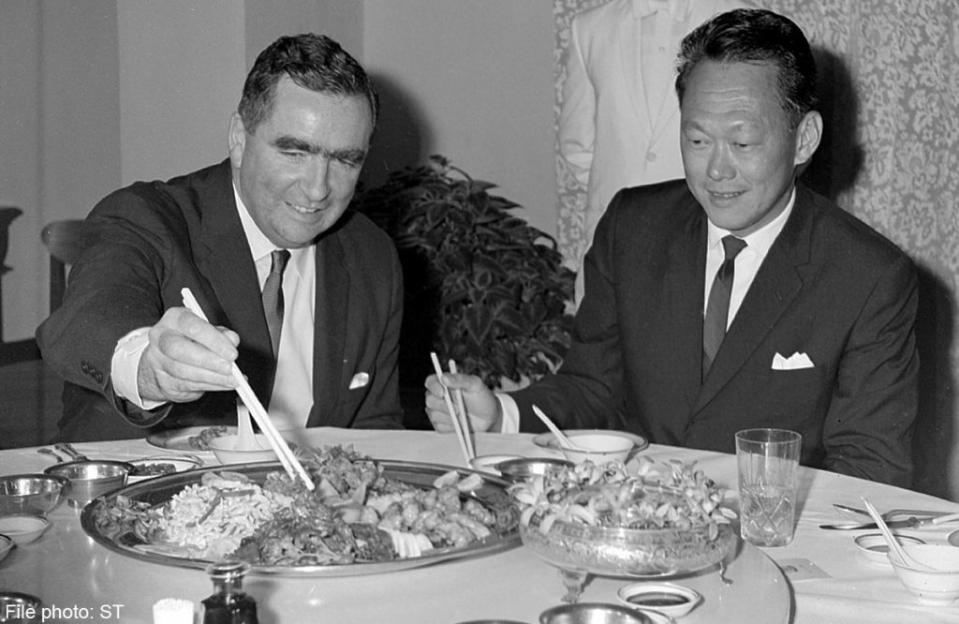
Or so the theory goes.
Another popular hypothesis courtesy of Quora is the ‘Long grain v.s. Short grain’ hypothesis. According to the proponents of this theory, chopstick use is determined not by pernicious western influence or the meanderings of cultural history, but something simpler—how sticky your rice is.
The short-grain Japonica rice cultivated in East Asian countries like China or Japan is very sticky and best eaten with chopsticks. Meanwhile, the long-grained Thai Jasmine rice or Basmati rice, which are fluffier and contain less starch, are best eaten with hands or spoons. Given the lower prices, popularity and relative versatility of these long-grain varietals in Singapore, it is only natural that we should abandon both chopsticks and the Orthodox method.
In short, it’s all Thailand’s fault for exporting so much rice.
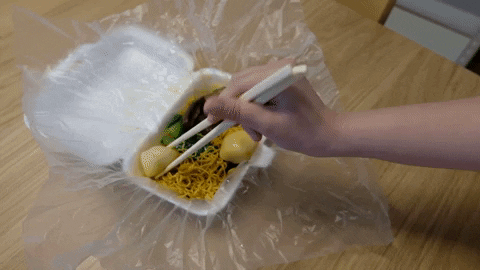
Such narratives are seductive but flawed. Consider, for example, the curious case of Japan.
Japan eats short-grain rice and its culture has been relatively untouched by the outside cultural influences. However, Orthodox chopstick techniques have been on the wane in Japan for almost half a century.
According to this New York Times article from 1984, which cities a source from the Japanese Ministry of Education, only 48.4% of elementary school pupils can wield chopsticks correctly. Chopstick aptitude is such a national crisis that chopstick training coaches can now charge up to $80 for a 2-hour weekly lessons.
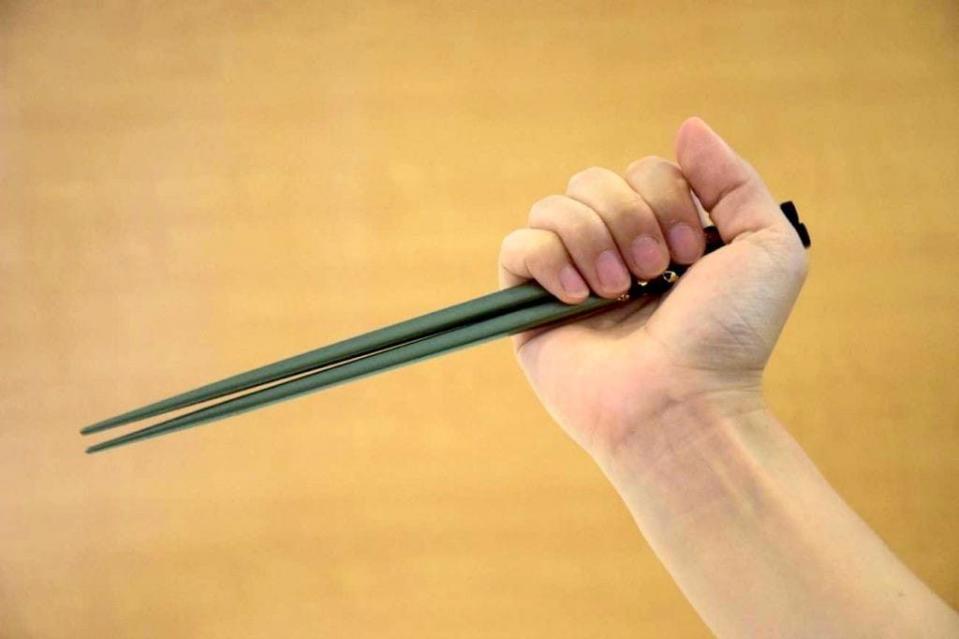
Things have not improved in the years since. In 2014, the Yomiuri Shimbun reported that image-conscious Japanese adults are still heading to these classes. Some thirty years after the NYT’s report, there is still a thriving market of chopstick ‘seminars’ and ‘lectures.’
Some wish to eat Japanese washoku with ‘elegance’, while others want to impress their Mothers-in-law. Whatever the reason, I think we can safely conclude The Great Chopstick Schism goes beyond Singapore or a love of curry on jasmine.
Chinese Imperialism
So are we left without an answer to this great mystery? Will the decline of Orthodox chopstick techniques be a footnote in culinary history?
Fear not, I have an improbable theory—by way of anecdote.
In 2017, I was accused of being a Chinese Imperialist in Hong Kong. It happened over supper, in a Prince Edward Cha Chaan Teng. My friends and I were having supper when we noticed ‘A’ struggling laboriously with his Beef Hor Fun. Instead of pinching and lifting the thick slices of noodles, he was using his chopsticks as a bulldozer. Gripping them in the flat of his palm as one might grasp an erect penis, he shovelled food along the edge of his plate and into a spoon, before lifting said spoon to his mouth.
The whole process was slow, and agonizing to watch, not least because everyone else had long since finished eating. After 10 minutes of watching a grown man fail at Hor Fun, someone in our party snapped—not me, I swear—and said: “Oi, wah lao, why you use chopstick liddat?”
“Huh. Eh. What. What do you mean?” ‘A’ croaked, sounding terribly defensive.
Too late. Damage done. Paradise Lost. A heated debate erupted over the existence of ‘correct’ chopstick technique. When I tried to suggest the Orthodox method—my method—was better, more efficient, I was labelled a Communist Party Spy.
Stop spreading your Mainland China Communist Confucian Supremacy Theories, they screeched, much to my annoyance.

It seemed stupid then … and it’s still stupid now, but I realise they were right.
I haven’t visited Taiwan in recent years, but Mainland China is a bastion of Chopstick Orthodoxy. It is able to remain so not because it excludes western influences or grows short-grain rice, but because of its highly-authoritarian nature. According to my Grandma in Suzhou, all schools in China used to enforce the Orthodox Chopstick technique —with tyrannical impunity. Teachers would correct and scold you if the ends of your chopstick crossed. There would be patrols at lunchtime, and recriminations aplenty.
Such Chopstick discipline would not work in Singapore or Japan. Helicopter parents take offence when the teacher scold their children for not doing homework. Whacking their boy-boys’ hand for improper chopstick technique would be almost unthinkable.
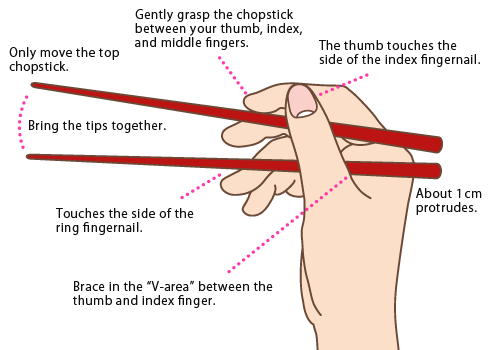
Hence, my theory: a uniform Chopstick technique cannot be produced except by authoritarian means—whether Confucian or Communist. The state must exert some form of violence to make sure everyone uses their chopstick in the same way.
In her introduction to The Norton Anthology of Food Writing, Ruth Reichl, the influential NYT food critic, writes about the elaborate table etiquette of upper-class Victorian Britain, who employed around ‘31 different pieces of flatware’. The point of the dessert fork, she claims, is not to facilitate the eating of cake, but to maintain class differences; to separate posh from pleb. The wrong utensil would mark one an ‘uneducated lout who didn’t belong in the polite company’.
Chopstick use is the same. As most of your friends can confirm, it does not come naturally. It is a set of rules that works only with incentives and punishments. Once, it separated the gentlemen from the peasant. Now, I’m not sure what purpose it serves, but it is nevertheless enforced by a mild form of repression in the form of school discipline and public shaming.

Maybe it’s Nationalism. Maybe it’s some kind of cultural-flex. Maybe it’s Maybelline. Whatever the case, it does not work in liberal, democratic societies; for whom such aimless collectivism is too much to stomach.
So embrace your heterodox chopstick technique! Cross your chopsticks! Use them as a snowplough or a spear! Turn your noodle soup into Wild Wild Wet! Throw them in the bin and eat your ramen with a spork! Do not be ashamed of your Anyhow-only chopstick method. Such, such are the joys of living in a non less authoritarian government. Freedom is an impaled fishball. The wrong way is the right way.
Or to quote yet another Chinese Imperialist: “ It doesn’t matter whether the cat is black or white, as long as it catches mice.”
If NUS will give me a grant and send me to North and South Korea to investigate The Great Chopstick Schism, I promise I will get to the bottom of this. University provosts and deans please fund my research at community@ricemedia.co.
The post Are You a Chopstick Traditionalist Or a Chopstick Anarchist? appeared first on RICE.



